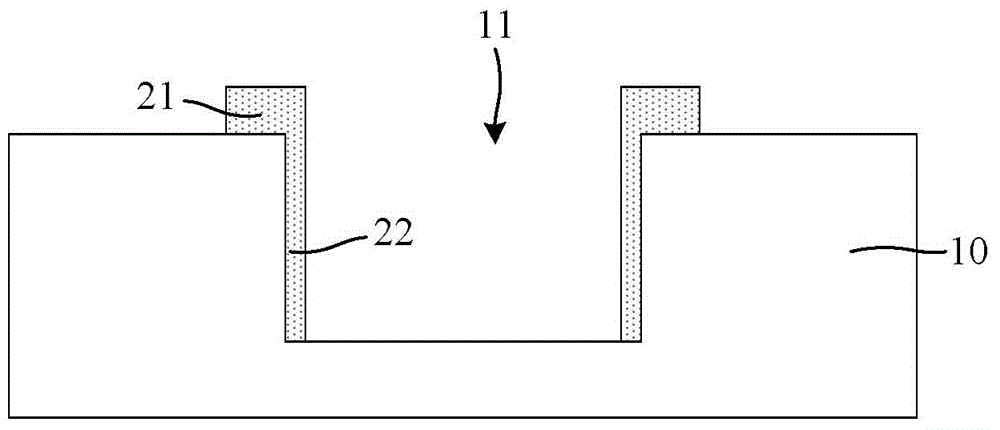Anisotropic magnetoresistance and preparing method for improving Z-axis sensitivity of anisotropic magnetoresistance
An anisotropic magnetic and anisotropic technology, applied in the manufacture/processing of electromagnetic devices, resistors controlled by magnetic fields, etc., can solve the problem of reduced sensitivity of anisotropic magnetoresistance, decreased sensitivity of Z-axis vertical magnetoresistance, Increase the side wall reluctance 22 and other issues to achieve the effect of increasing thickness
- Summary
- Abstract
- Description
- Claims
- Application Information
AI Technical Summary
Problems solved by technology
Method used
Image
Examples
Embodiment Construction
[0032] The anisotropic magnetoresistance and the preparation method for improving the Z-axis sensitivity of the anisotropic magnetoresistance of the present invention will be described in more detail below in conjunction with the schematic diagrams, which represent the preferred embodiments of the present invention, and it should be understood that those skilled in the art can modify The invention described herein, while still achieving the advantageous effects of the invention. Therefore, the following description should be construed as widely known to those skilled in the art and not as a limitation of the present invention.
[0033] In the interest of clarity, not all features of an actual embodiment are described. In the following description, well-known functions or constructions are not described in detail since they would obscure the invention with unnecessary detail. It should be recognized that in the development of any actual embodiment, a number of implementation d...
PUM
 Login to View More
Login to View More Abstract
Description
Claims
Application Information
 Login to View More
Login to View More - R&D
- Intellectual Property
- Life Sciences
- Materials
- Tech Scout
- Unparalleled Data Quality
- Higher Quality Content
- 60% Fewer Hallucinations
Browse by: Latest US Patents, China's latest patents, Technical Efficacy Thesaurus, Application Domain, Technology Topic, Popular Technical Reports.
© 2025 PatSnap. All rights reserved.Legal|Privacy policy|Modern Slavery Act Transparency Statement|Sitemap|About US| Contact US: help@patsnap.com



